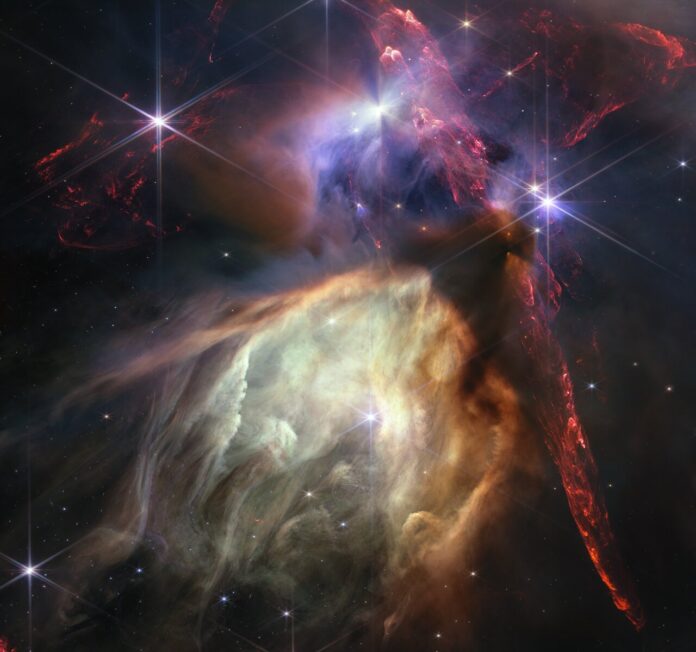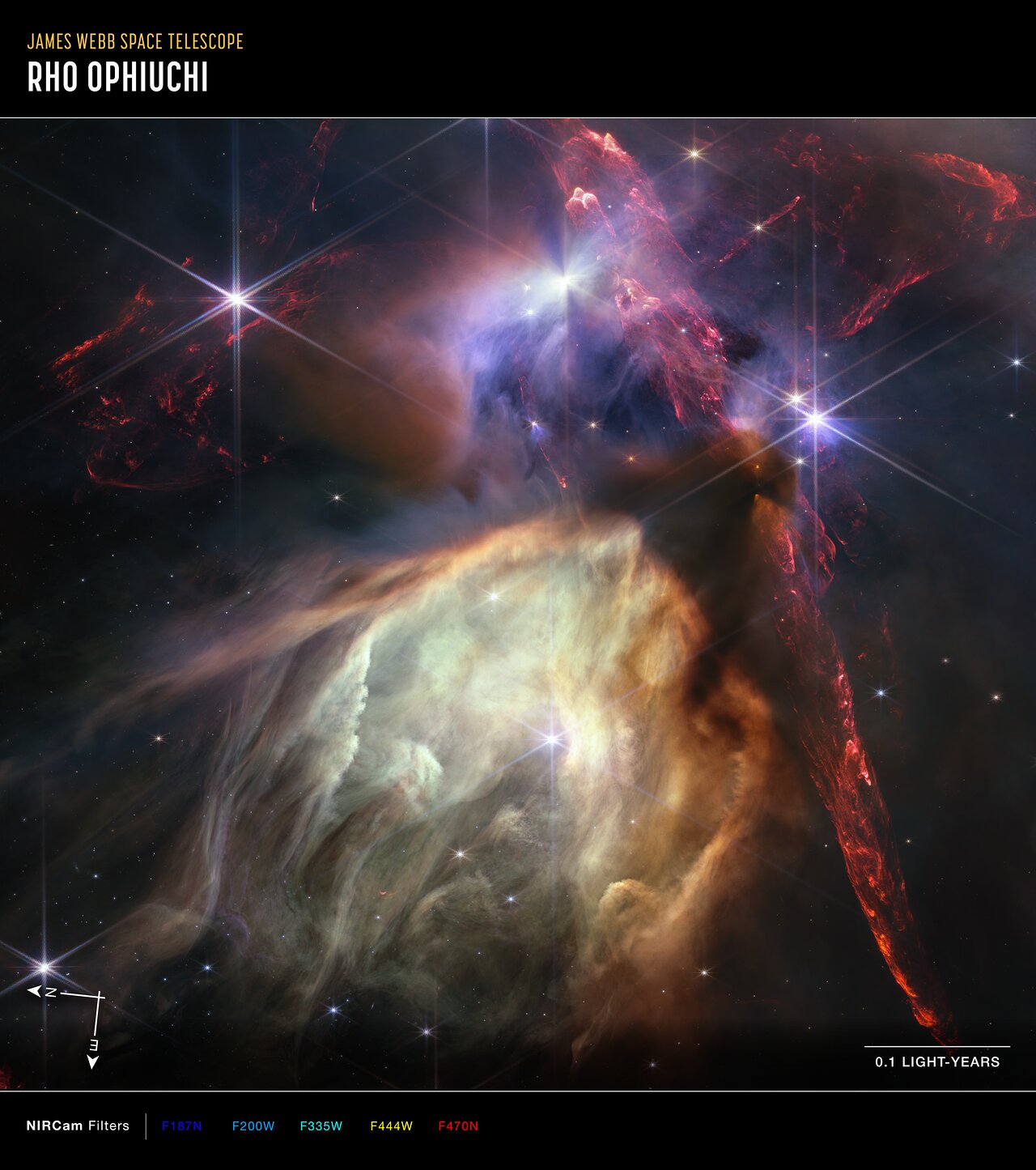
The James Webb Space Telescope has fulfilled its promise to reveal the Universe like never before during its first year of scientific activity. To celebrate the completion of a successful first year, a new Webb image of a small region of star formation in the Rho Ophiuchi cloud complex has been released.
The image shows the closest region of star formation to us. Its proximity to 390 light-years allows for a very detailed close-up without foreground stars in the intervening space.
How stars form
The region shown contains approximately 50 young stars, all of which are similar in mass to the Sun or smaller. The darkest areas are the densest, where thick dust envelops the still-forming protostars. Huge red bipolar jets of molecular hydrogen dominate the image, appearing horizontally in the upper third and vertically on the right.
They occur when a star first breaks through its natal envelope of cosmic dust, ejecting a pair of opposing jets into space. In contrast, the star S1 has carved out a glowing cave of dust in the lower half of the image. It is the only star in the image that is significantly more massive than the Sun.
Some of the stars in the image display shadows indicative of protoplanetary disks – potential future planetary systems in the making.

Image credit:
NASA, ESA, CSA, STScI, K. Pontoppidan (STScI), A. Pagan (STScI)
Webb’s achievements
Since releasing its first deep field image in July 2022, Webb has fulfilled its promise to show us more of the Universe than ever before. However, Webb has discovered much more than distant galaxies in the early Universe.
In addition to the stunning infrared images, scientists were really fascinated by Webb’s crisp spectra – the detailed information that can be extracted from light using the telescope’s spectroscopic instruments. The Webb spectra confirmed the distances to some of the most distant galaxies ever observed and revealed the oldest, most distant supermassive black holes.
They have determined the compositions of planetary atmospheres (or lack thereof) in more detail than ever before, and for the first time narrowed down the types of atmospheres that might exist on rocky exoplanets. They also revealed the chemical composition of stellar nurseries and protoplanetary disks, detecting water, organic molecules containing carbon, and much more.
Webb’s observations have already led to hundreds of scientific articles that answer long-standing questions and raise new ones that Webb is dedicated to solving.
Detailing the Solar system
The breadth of Webb’s science is also evident in his observations of the region of space we are most familiar with – the Solar system. Faint rings of gas giants dotted with satellites emerge from the darkness, and Webb shows distant galaxies in the background.
By comparing the detection of water and other molecules in our solar system with those found in the disks of other, much younger planetary systems, Webb is helping to build clues to our own origins – how Earth became the perfect place for life as we know it.








